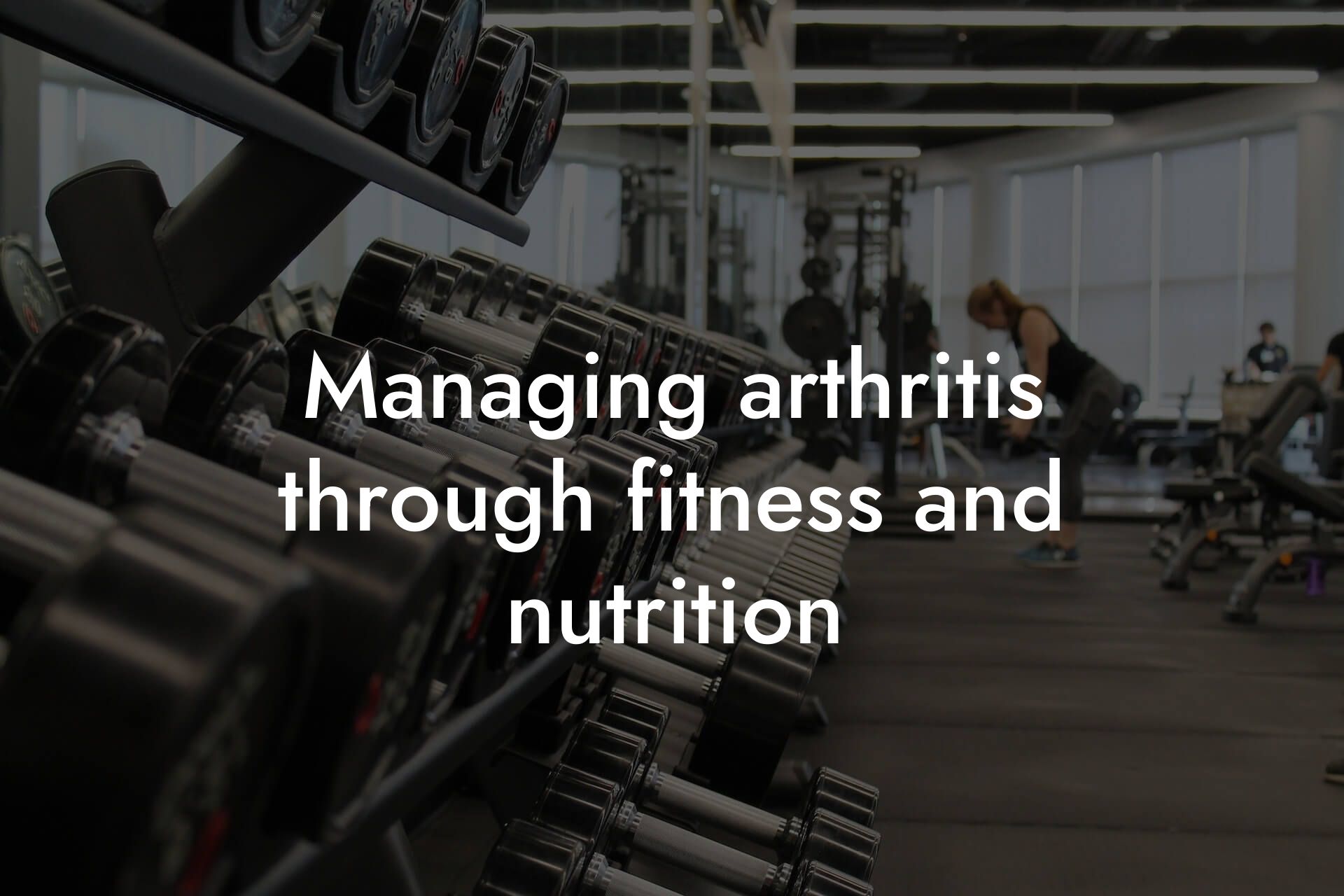As a high-earning professional, you understand the importance of maintaining a healthy physique and overall well-being. One crucial aspect of health that often gets overlooked is blood pressure. High blood pressure, also known as hypertension, is a silent killer that can lead to severe health complications if left unmanaged. The good news is that exercise plays a significant role in managing high blood pressure, and in this article, we'll delve into the details of how physical activity can help you keep your blood pressure in check.
Table of Contents
- What is High Blood Pressure?
- The Risks of Unmanaged High Blood Pressure
- How Exercise Helps Manage High Blood Pressure
- The Best Exercises for Managing High Blood Pressure
- How Often and How Long Should You Exercise?
- Monitoring Your Progress
- Get a Complete Body Assessment with Tano Performance Group
- Frequently Asked Questions
What is High Blood Pressure?
Before we dive into the role of exercise in managing high blood pressure, it's essential to understand what high blood pressure is. Blood pressure is the force of blood pushing against the walls of your arteries as your heart pumps blood throughout your body. High blood pressure occurs when the force of blood pushing against the walls of your arteries is consistently too high. This can cause damage to your blood vessels, heart, and kidneys, increasing the risk of heart disease, stroke, and kidney disease.
The Risks of Unmanaged High Blood Pressure
If left unmanaged, high blood pressure can lead to severe health complications, including:
• Heart disease: High blood pressure can cause the heart to work harder, leading to thickening of the heart muscle, which can increase the risk of heart failure.
• Stroke: High blood pressure can cause blood vessels in the brain to burst or become blocked, leading to a stroke.
• Kidney disease: High blood pressure can damage the kidneys, leading to kidney failure.
• Vision loss: High blood pressure can damage blood vessels in the eyes, leading to vision loss.
How Exercise Helps Manage High Blood Pressure
Regular exercise is a potent tool in managing high blood pressure. Exercise can help lower blood pressure in several ways:
• Improves blood flow: Exercise helps improve blood flow and reduces blood pressure by dilating blood vessels.
• Strengthens heart: Regular exercise strengthens the heart, allowing it to pump blood more efficiently, which can help lower blood pressure.
• Reduces stress: Exercise is a natural stress-reducer, and chronic stress can contribute to high blood pressure.
• Improves sleep: Regular exercise can help improve sleep quality, which is essential for blood pressure regulation.
The Best Exercises for Managing High Blood Pressure
When it comes to exercising for high blood pressure management, it's essential to focus on activities that are low-to-moderate intensity and can be sustained for at least 30 minutes per session. Some of the best exercises for managing high blood pressure include:
• Brisk walking: Walking quickly at a pace of 3-4 miles per hour or faster can help lower blood pressure.
• Swimming: Swimming is a low-impact exercise that can help improve cardiovascular health and lower blood pressure.
• Cycling: Stationary cycling or cycling on a bike can help improve cardiovascular health and lower blood pressure.
• Yoga: Certain yoga poses, such as downward-facing dog and child's pose, can help lower blood pressure by reducing stress and improving blood flow.
How Often and How Long Should You Exercise?
To reap the benefits of exercise on high blood pressure management, it's essential to exercise regularly. The American Heart Association recommends at least 150 minutes of moderate-intensity aerobic exercise or 75 minutes of vigorous-intensity aerobic exercise per week. You can also incorporate strength-training exercises into your routine, aiming for 2-3 sessions per week.
Monitoring Your Progress
As you start an exercise program to manage your high blood pressure, it's essential to monitor your progress. You can do this by:
• Tracking your blood pressure: Use a blood pressure monitor to track your blood pressure regularly.
• Monitoring your exercise routine: Keep a log of your exercise routine, including the type of exercise, duration, and intensity.
• Scheduling regular check-ups: Regular check-ups with your healthcare provider can help you stay on track and make adjustments to your exercise program as needed.
Exercise plays a vital role in managing high blood pressure. By incorporating regular physical activity into your lifestyle, you can help lower your blood pressure, reduce your risk of heart disease and stroke, and improve your overall health. Remember to focus on low-to-moderate intensity exercises, monitor your progress, and schedule regular check-ups with your healthcare provider. With the right exercise program, you can take control of your blood pressure and live a healthier, happier life.
Get a Complete Body Assessment with Tano Performance Group
At Tano Performance Group, we understand the importance of maintaining a healthy physique and overall well-being. Our state-of-the-art DEXA machine provides a complete body assessment, giving you a detailed picture of your body composition, bone density, and more. With this information, you can tailor your exercise program to meet your specific needs and goals. Contact us today to schedule your appointment and take the first step towards achieving optimal health and performance.
Frequently Asked Questions
What is high blood pressure, and why is it a concern?
High blood pressure, also known as hypertension, is a condition where the blood pressure in your arteries is consistently too high. This can lead to damage to your heart, brain, kidneys, and other organs. It's a concern because it increases the risk of heart disease, stroke, and kidney disease, which can be life-threatening if left unmanaged.
How does exercise help manage high blood pressure?
Regular exercise can help lower blood pressure and reduce the risk of heart disease. Exercise can improve blood flow, increase oxygenation, and strengthen the heart, making it more efficient at pumping blood. Additionally, exercise can help with weight management, reduce stress, and improve overall cardiovascular health.
What types of exercise are best for managing high blood pressure?
Aerobic exercises such as brisk walking, jogging, cycling, and swimming are excellent for managing high blood pressure. These exercises can help lower blood pressure and improve cardiovascular health. Resistance training, such as weightlifting, can also be beneficial in improving overall health and reducing blood pressure.
How often should I exercise to manage high blood pressure?
The American Heart Association recommends at least 150 minutes of moderate-intensity aerobic exercise or 75 minutes of vigorous-intensity aerobic exercise per week to help manage high blood pressure. It's also important to incorporate rest days and variety in your exercise routine to avoid burnout and prevent plateaus.
Can I start exercising if I've been diagnosed with high blood pressure?
Yes, but it's essential to consult with your healthcare provider before starting any new exercise program, especially if you've been diagnosed with high blood pressure. They can help you create a personalized exercise plan that takes into account your health status, medications, and any physical limitations.
What are some exercises I can do at home to manage high blood pressure?
You can do bodyweight exercises like push-ups, squats, and lunges, or try yoga and Pilates to improve flexibility and balance. You can also invest in home exercise equipment like resistance bands or a stationary bike. Just remember to start slowly and gradually increase the intensity and duration as you become more comfortable.
Can exercise replace medication for high blood pressure?
While exercise can help manage high blood pressure, it's not a replacement for medication. If you've been prescribed medication, it's essential to continue taking it as directed by your healthcare provider. Exercise can be used in conjunction with medication to help lower blood pressure and improve overall health.
How long does it take to see the benefits of exercise on high blood pressure?
The benefits of exercise on high blood pressure can be seen within a few weeks to a few months of regular exercise. However, it's essential to be consistent and patient, as it may take some time to notice significant improvements in blood pressure.
Can exercise help reduce the risk of heart disease?
Yes, regular exercise can help reduce the risk of heart disease by improving cardiovascular health, lowering blood pressure, and reducing the risk of other cardiovascular risk factors like high cholesterol and obesity.
What are some common mistakes people make when exercising for high blood pressure?
Common mistakes include not consulting with a healthcare provider before starting a new exercise program, not listening to their body and pushing themselves too hard, and not incorporating rest days and variety in their exercise routine.
How can I track my progress and stay motivated?
Keep a workout log or use a fitness tracker to track your progress, set realistic goals, and celebrate your achievements. Find an exercise buddy or join a fitness community to stay motivated and accountable.
What are some exercises that can help reduce stress and anxiety?
Yoga, Pilates, and meditation can help reduce stress and anxiety by promoting relaxation and improving mood. These exercises can also help lower blood pressure and improve overall cardiovascular health.
Can exercise help improve sleep quality?
Yes, regular exercise can help improve sleep quality by reducing stress and anxiety, improving mood, and increasing the body's production of melatonin, a hormone that regulates sleep.
How can I incorporate high-intensity interval training (HIIT) into my exercise routine?
HIIT involves short bursts of high-intensity exercise followed by brief periods of rest. You can incorporate HIIT into your exercise routine by adding short bursts of intense exercise to your aerobic workouts, such as sprints or burpees.
What are some exercises that can help improve flexibility and balance?
Yoga, Pilates, and tai chi can help improve flexibility and balance by increasing range of motion, improving posture, and reducing the risk of falls.
Can exercise help improve bone density?
Yes, weight-bearing exercises like weightlifting, running, and jumping can help improve bone density by stimulating the growth of new bone tissue and reducing the risk of osteoporosis.
How can I stay safe while exercising with high blood pressure?
Listen to your body and stop if you experience any discomfort or pain. Avoid exercising in extreme temperatures, and stay hydrated by drinking plenty of water before, during, and after exercise.
What are some exercises that can help improve cardiovascular health?
Aerobic exercises like brisk walking, jogging, cycling, and swimming can help improve cardiovascular health by strengthening the heart, improving blood flow, and reducing the risk of heart disease.
Can exercise help reduce the risk of kidney disease?
Yes, regular exercise can help reduce the risk of kidney disease by improving cardiovascular health, lowering blood pressure, and reducing the risk of other cardiovascular risk factors like high cholesterol and obesity.
How can I make exercise a habit?
Make exercise a priority by scheduling it into your daily routine, finding an exercise buddy, and rewarding yourself for reaching your fitness goals.
What are some exercises that can help improve overall health and wellness?
Aerobic exercises, resistance training, and flexibility exercises can help improve overall health and wellness by reducing the risk of chronic diseases, improving mood, and increasing energy levels.
Can exercise help improve mental health?
Yes, regular exercise can help improve mental health by reducing stress and anxiety, improving mood, and increasing the production of endorphins, which are natural mood-boosters.
How can I get started with an exercise program for high blood pressure?
Consult with your healthcare provider, set realistic goals, and start slowly with short, manageable workouts. Gradually increase the intensity and duration as you become more comfortable, and find an exercise buddy or join a fitness community to stay motivated and accountable.
Here are some related articles you might love...
- Body composition changes in cancer survivors
- How autoimmune diseases affect body composition
- Managing arthritis through fitness and nutrition
- Understanding metabolic syndrome and its impact on health
- How diabetes affects body composition
- How to improve body composition with hypothyroidism
- The impact of chronic kidney disease on body composition
- How to reduce the risk of heart disease through body composition
- Managing cholesterol through diet and exercise
Zak Faulkner
Zak Faulkner is a leading authority in the realm of physical health and body composition analysis, with over 15 years of experience helping professionals optimise their fitness and well-being. As one the experts behind Tano Performance Group, Zak has dedicated his career to providing in-depth, science-backed insights that empower clients to elevate their physical performance and overall health.
With extensive knowledge of DEXA technology, Zak specializes in delivering comprehensive body assessments that offer precise data on body fat, muscle mass, bone density, and overall physique. His expertise enables individuals to make informed decisions and achieve their fitness goals with accuracy and confidence. Zak’s approach is rooted in a deep understanding of human physiology, combined with a passion for helping clients unlock their full potential through personalised strategies.
Over the years, Zak has earned a reputation for his commitment to excellence, precision, and client-focused service. His guidance is trusted by top professionals who demand the best when it comes to their health. Whether advising on fitness programs, nutritional strategies, or long-term wellness plans, Zak Faulkner’s insights are a valuable resource for anyone serious about taking their health and fitness to the next level.
At Tano Performance Group, Zak continues to lead our Content Team revolutionising how professionals approach their physical health, offering unparalleled expertise that drives real results.




